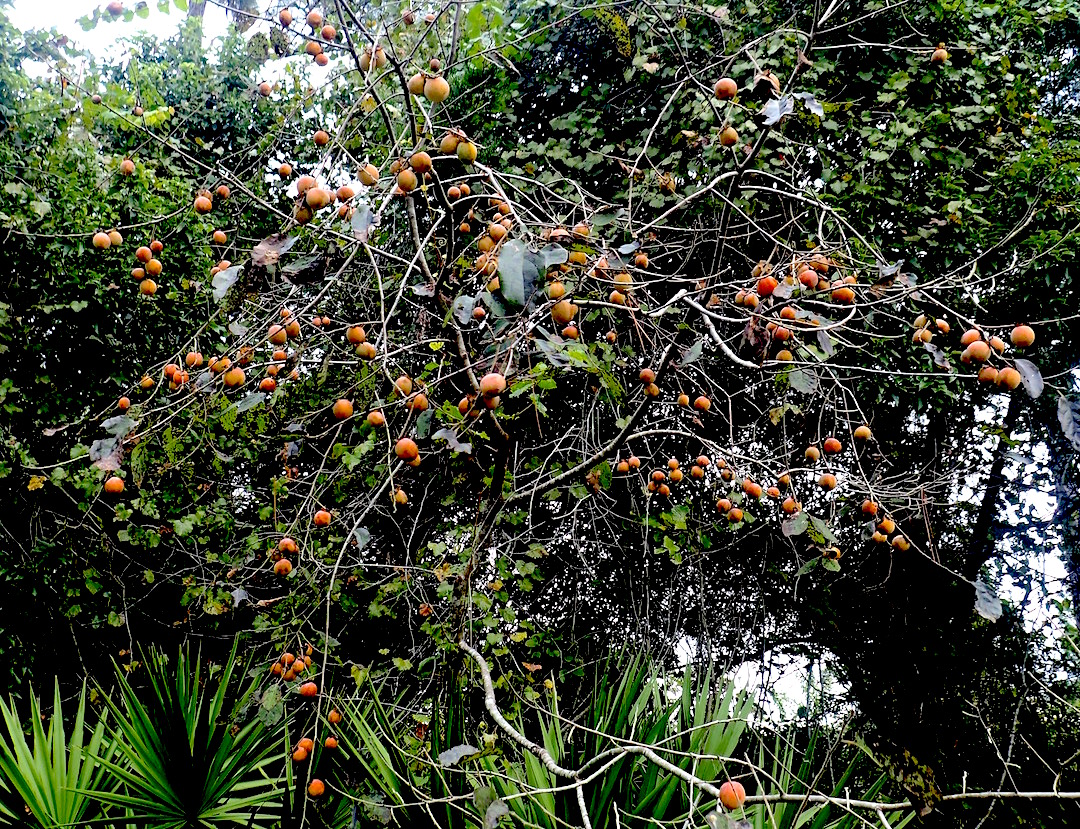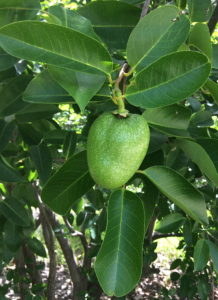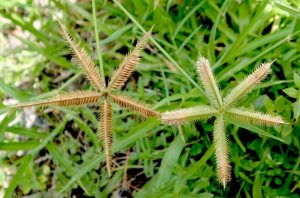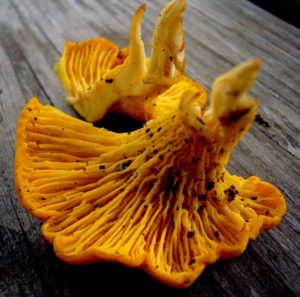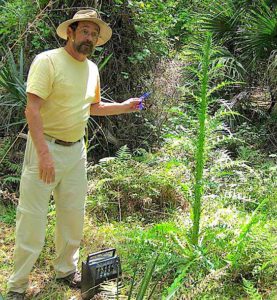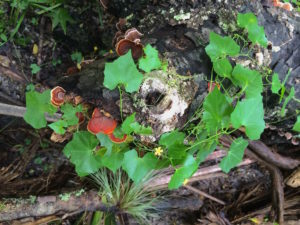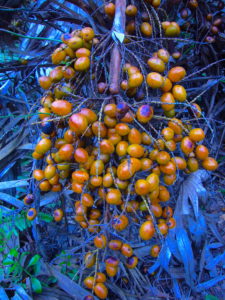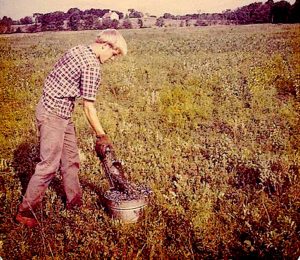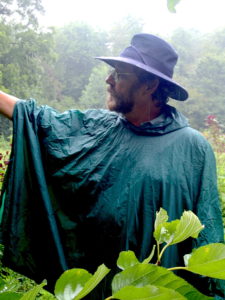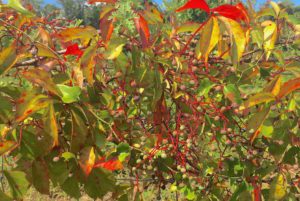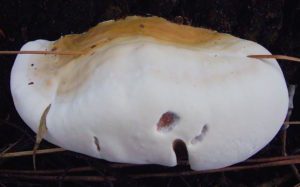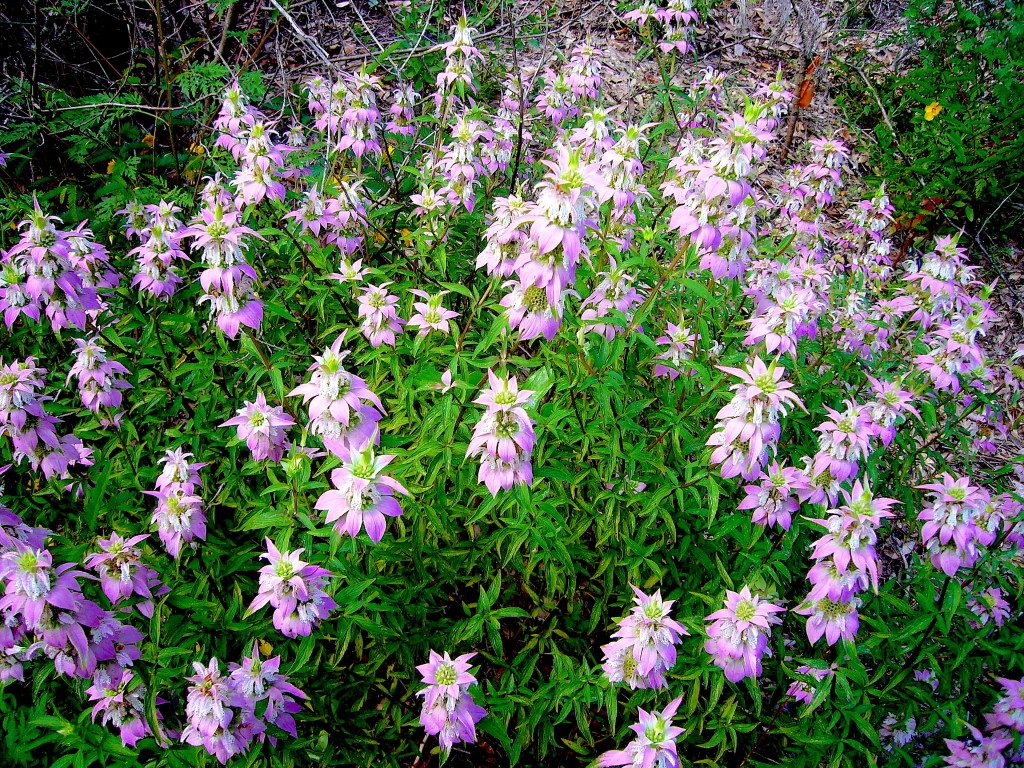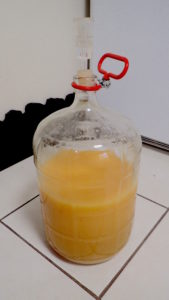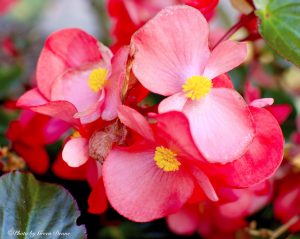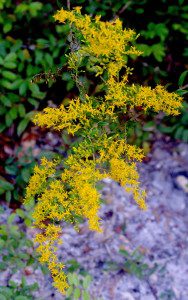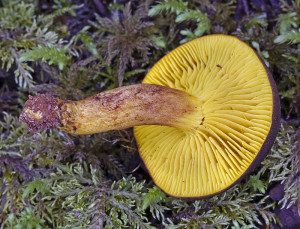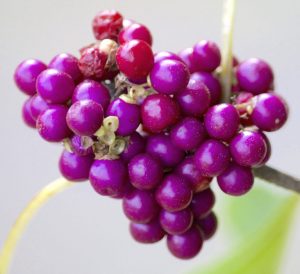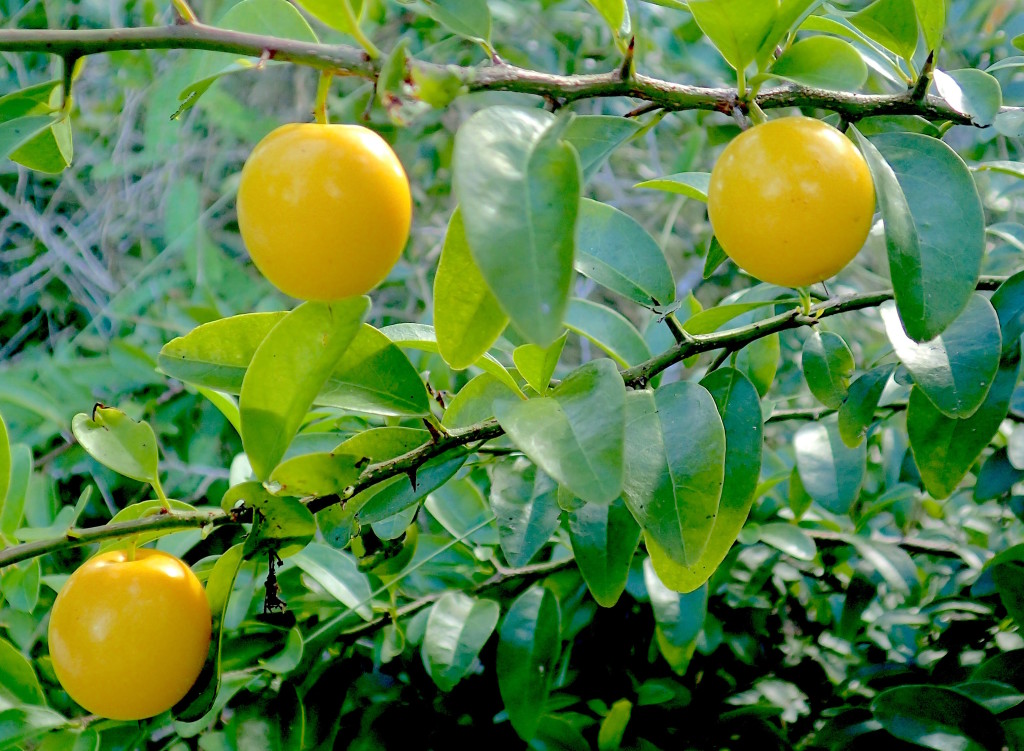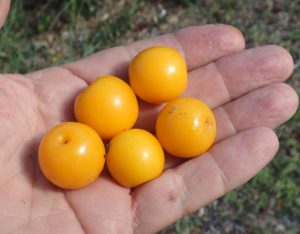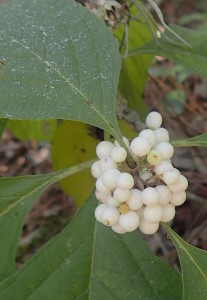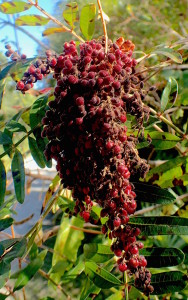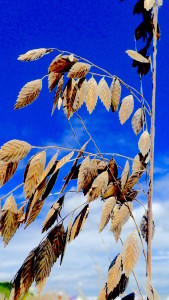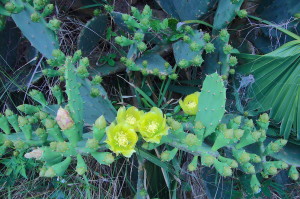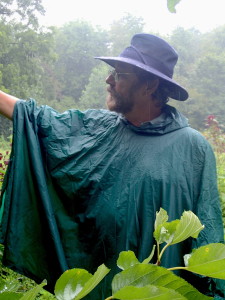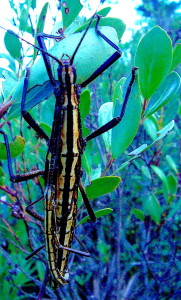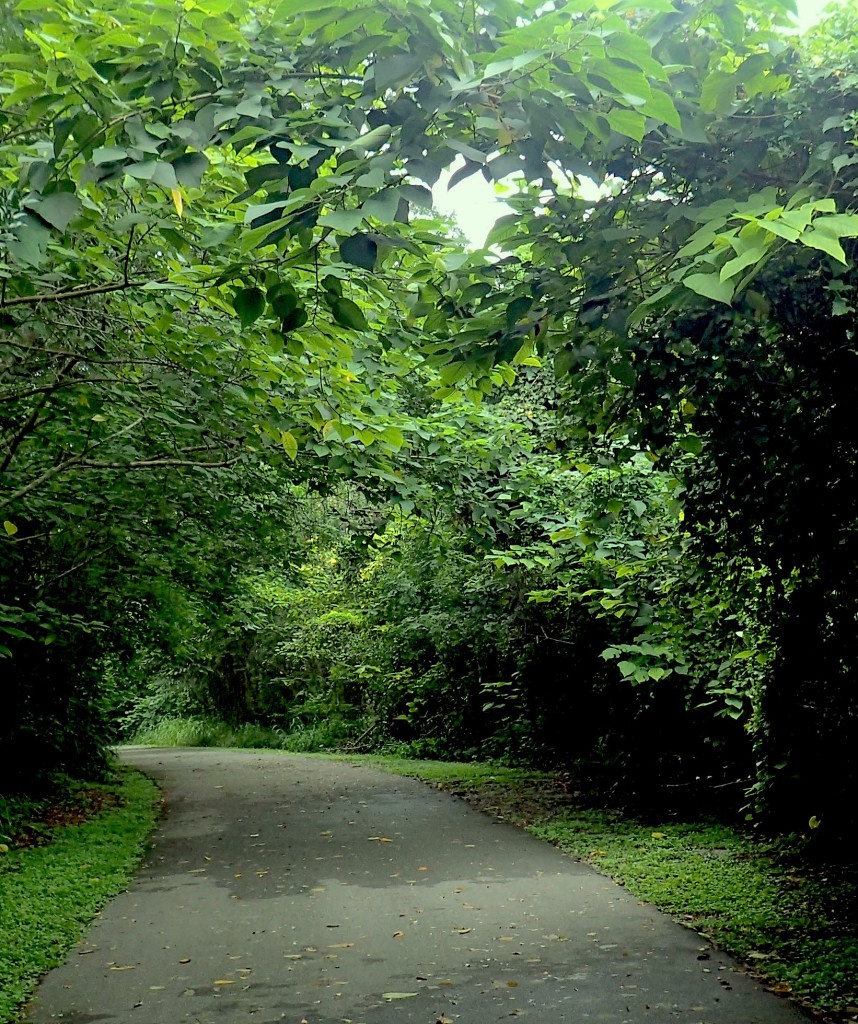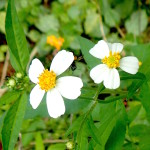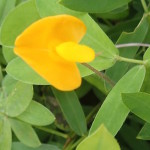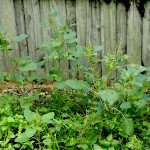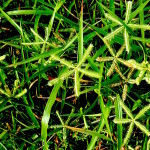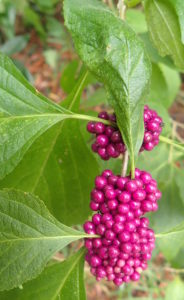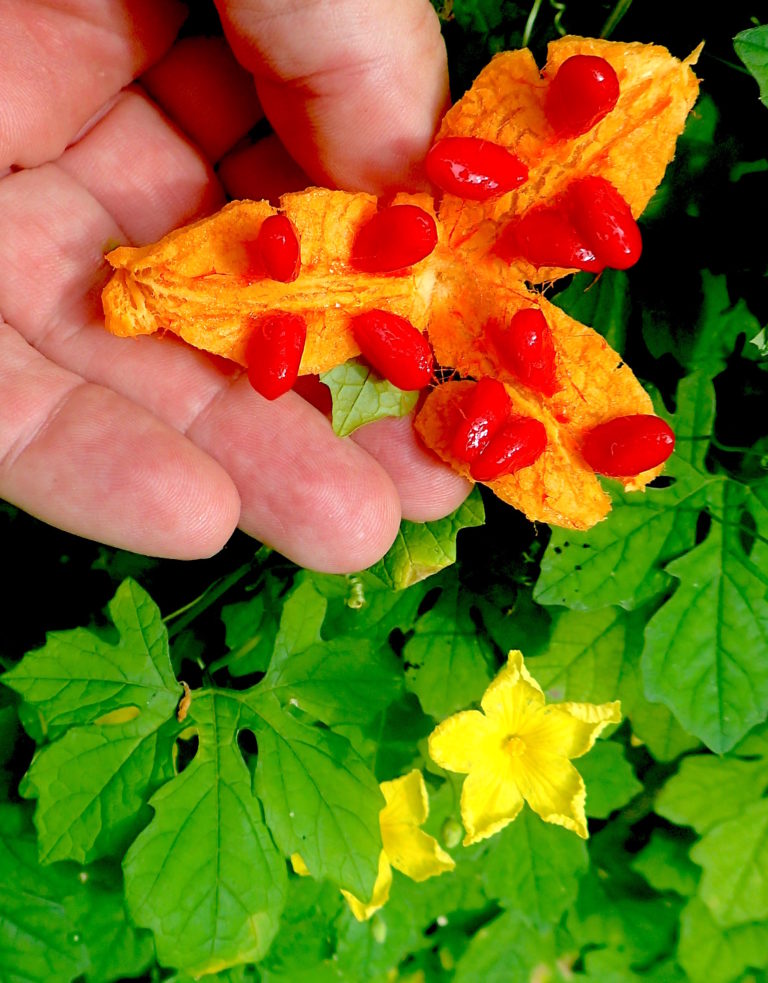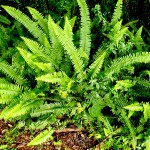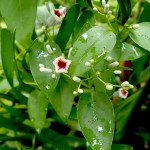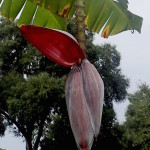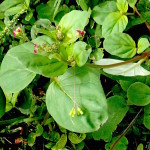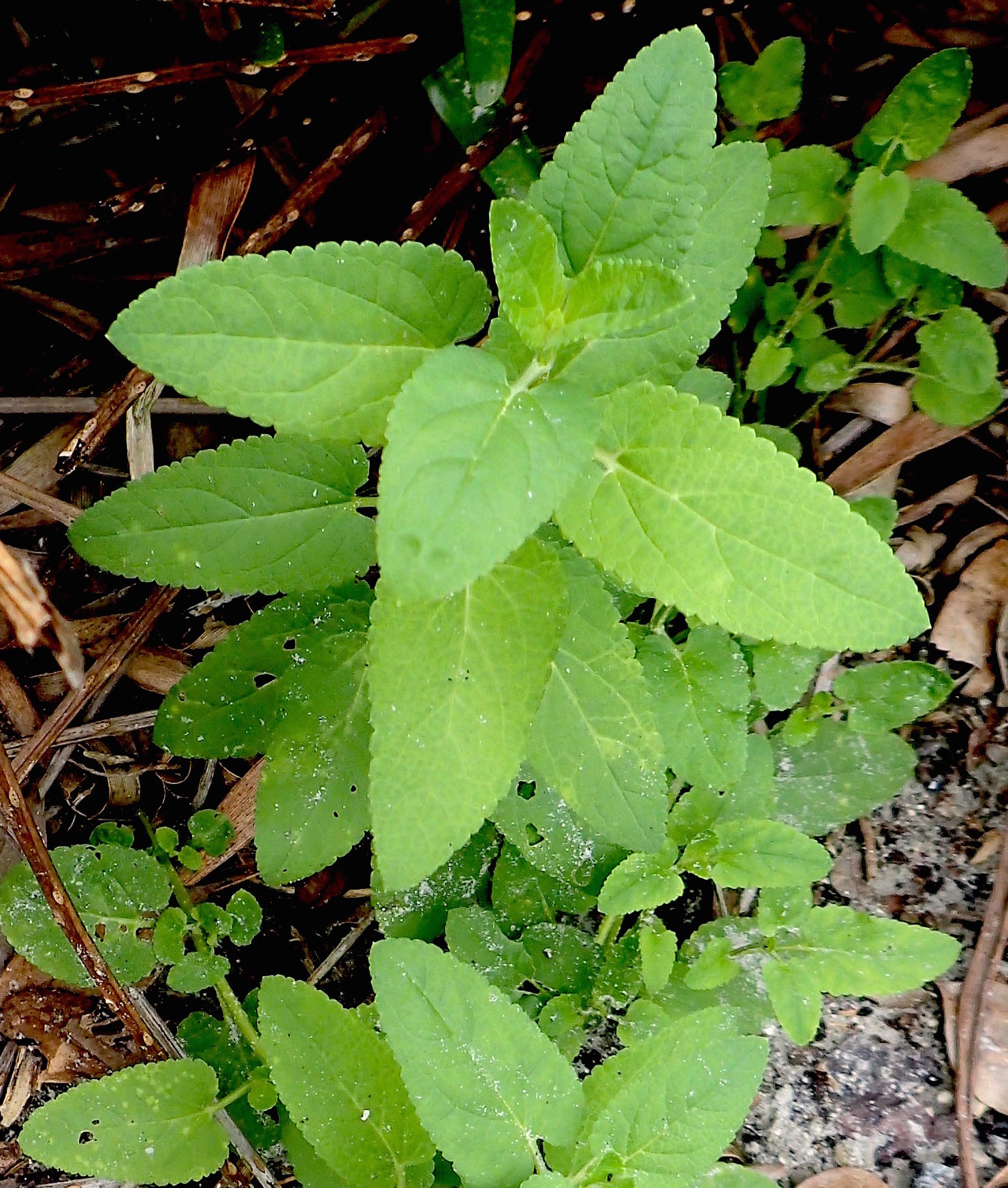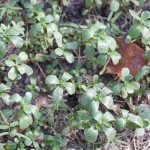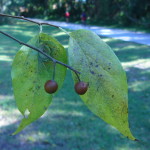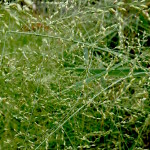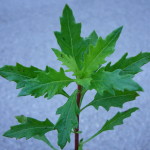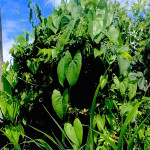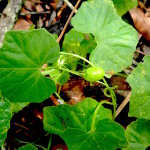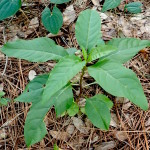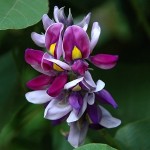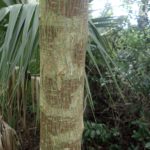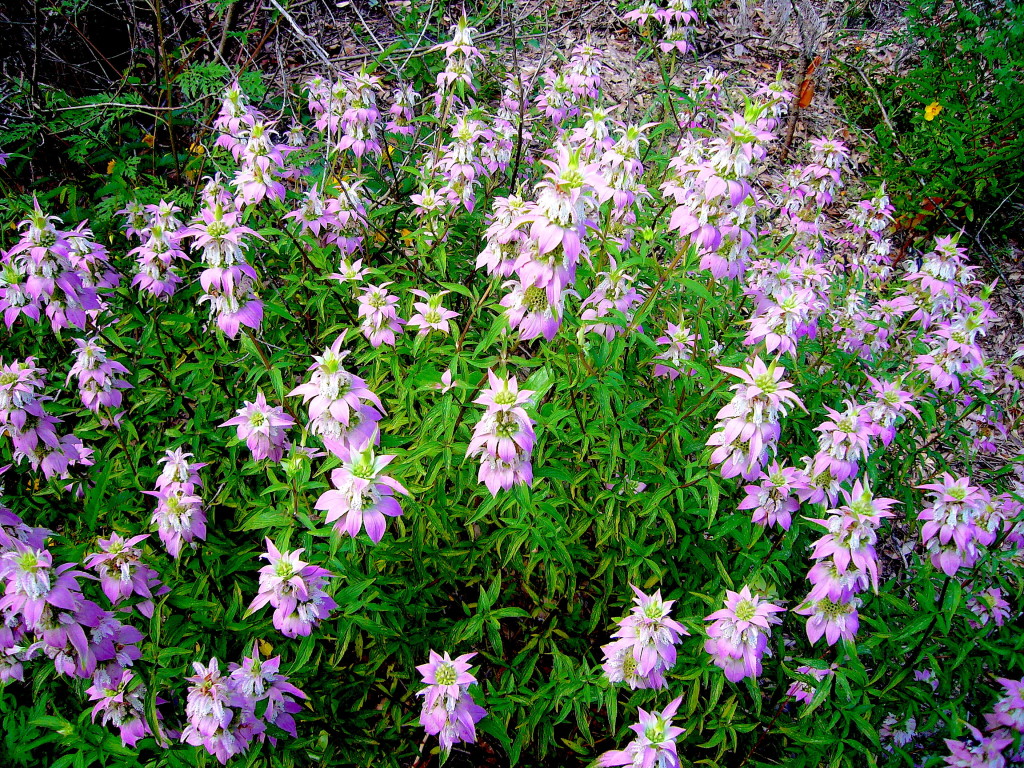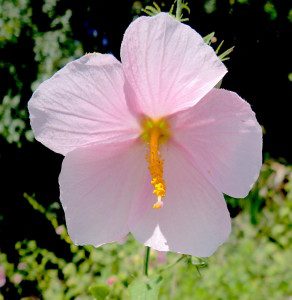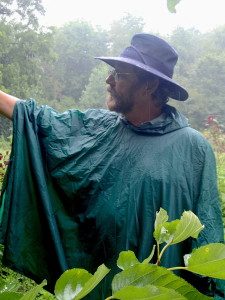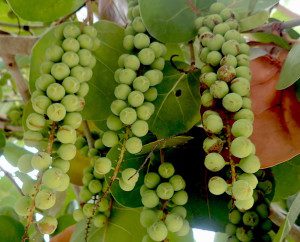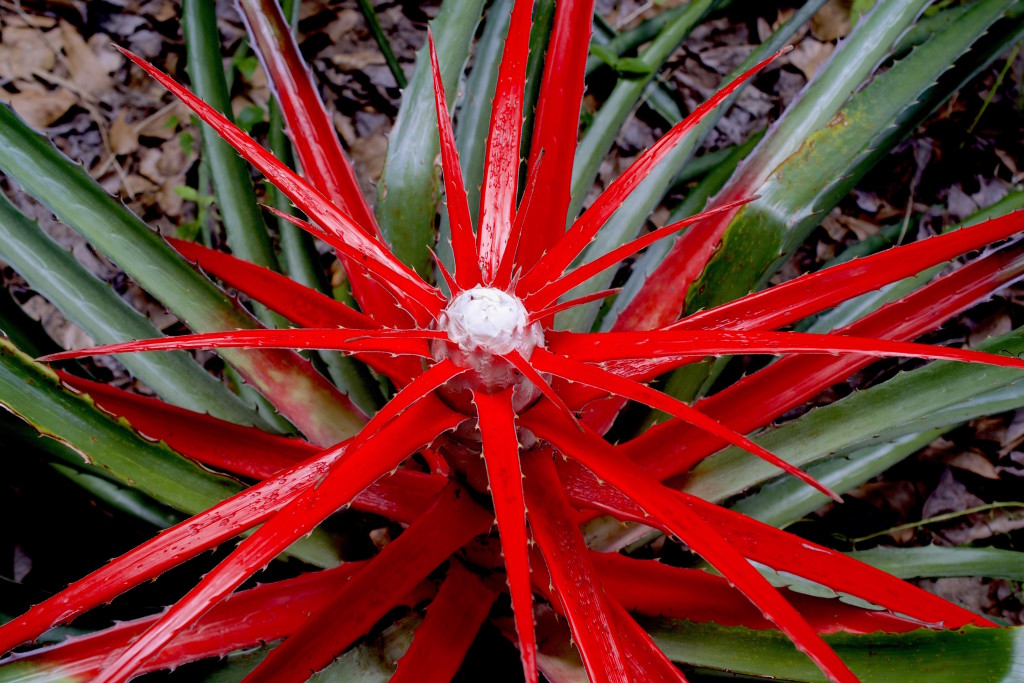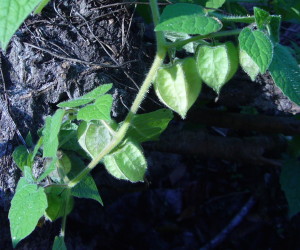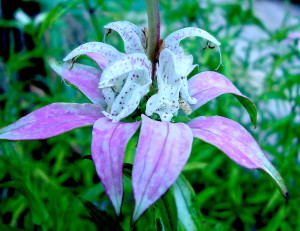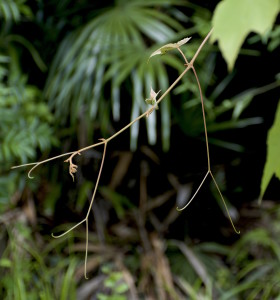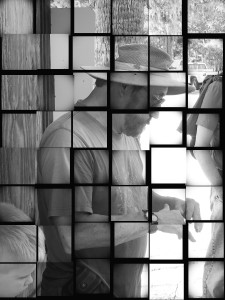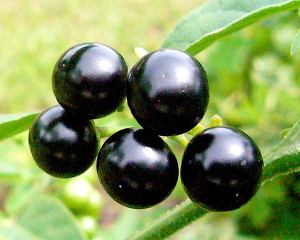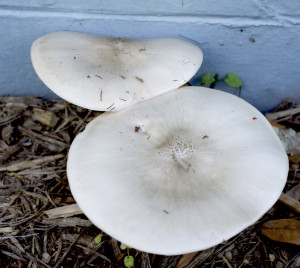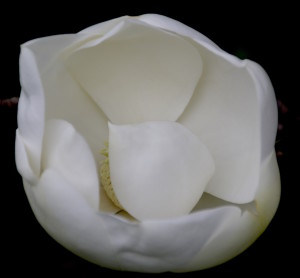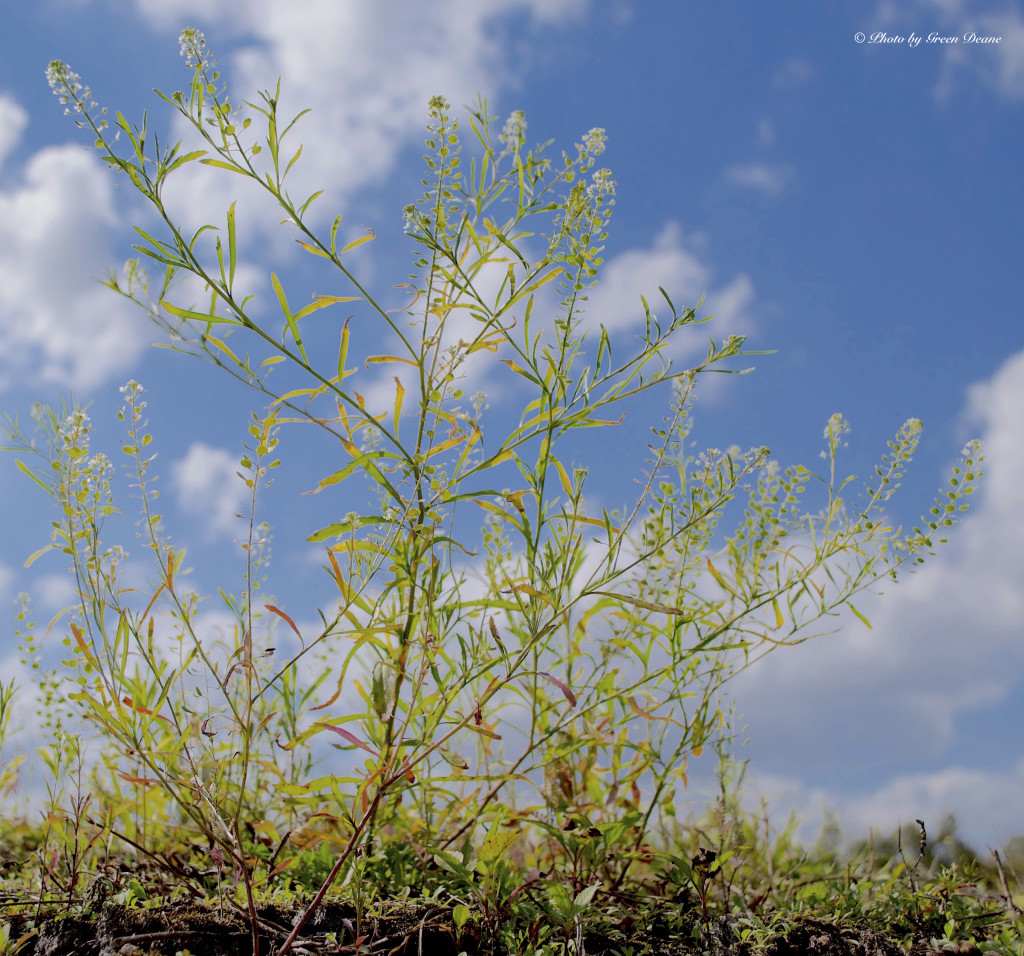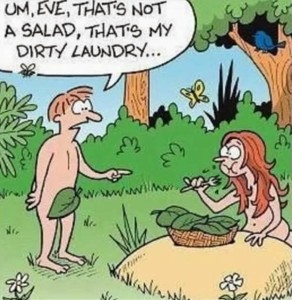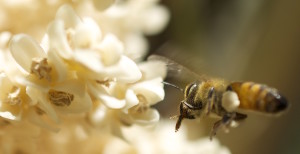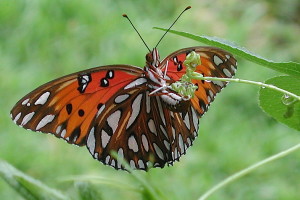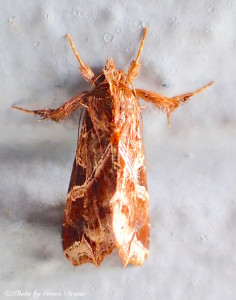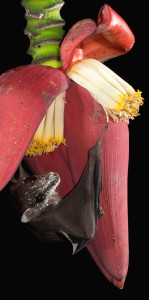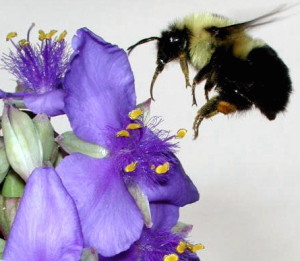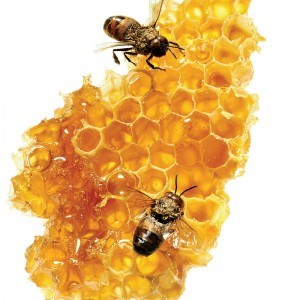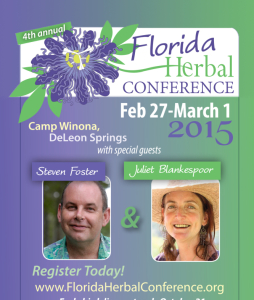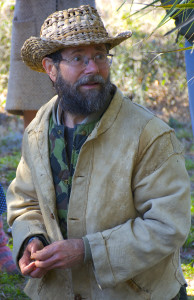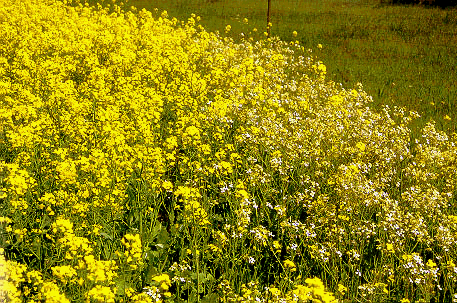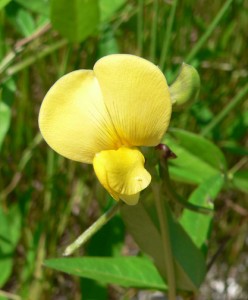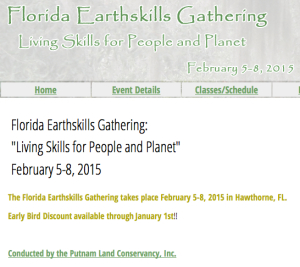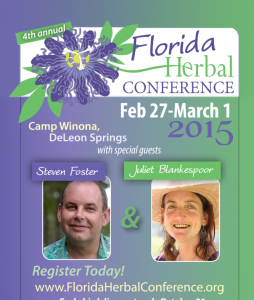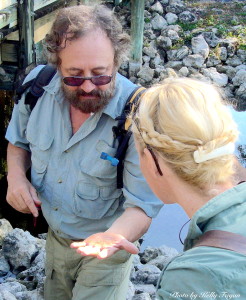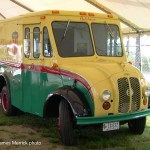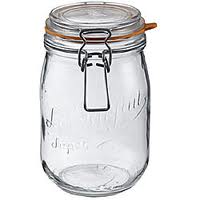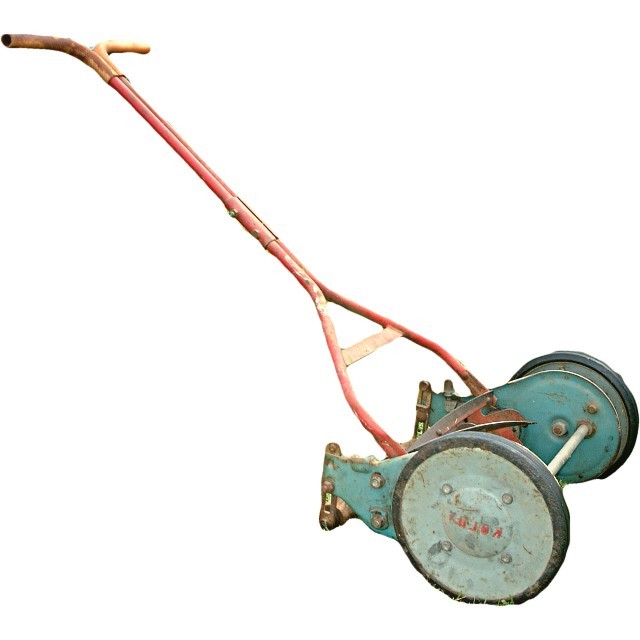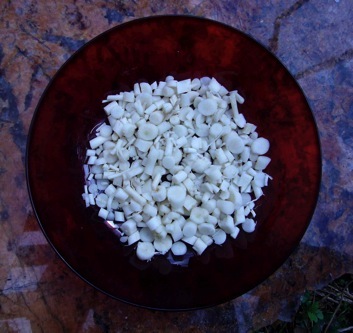
Any guesses what this diced root is? It could be from two closely related plants both edible. You can learn about one here, and the other here. Photo by Green Deane.
It wasn’t chickweed as far as the eye could see, but almost. The location: Little Orange Creek Nature Park, Hawthorne, Florida. The event: The Florida Earthskills 2015 gathering. I taught two wild edible plant classes there then a separate class in Gainesville.
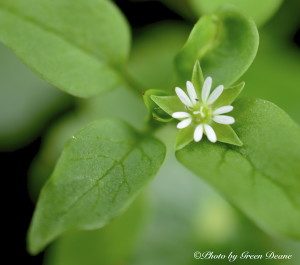
Chickweed, Stellaria media, has five deeply incised petals. Photo by Green Deane
As for seasonal edibles they were abundant: Chickweed, Pellitory, Cleavers, Wild Radishes, Wild Garlic/Onions, Hensbit, Nettles, Maypops, Oxalis, Sweet Clover, even some frost-brave Poke Weed. At least one plum was flowering — probably the Flatwood — and one could find Blackberries in bloom as well as the Eastern Redbud. Just because there might be some frost on the palm don’t think there isn’t any food foraging this time of year. It is prime season for many species that are spring and summer plants up north. They find our winters just right and the summers too hot.
In Central Florida one does not find an acre of chickweed, but 150 some miles to the north it was quite abundant. Chickweed is highly seasonal and is easy to identify. The main elements we are looking for are a line of hair on the stem that changes sides at every leaf node, a stretchy inner core, five white petals that look like 10 because the are deeply incised, and it tastes like corn silk. If you want to read more about chickweed you can go here.
Earthskills gathering are humbling: You meet a lot of well-informed and talented folks many of whom have spent a life time accumulating their specialized knowledge or craft. When many people study the same thing they are like different spotlights looking in slightly different places. You don’t all learn exactly the same thing though the core can be the same. So while you can indeed have your handful of facts about an edible plant a friend can have a different handful about the same plant. Thus you can learn more and also enjoy being a student again. I was thinking that when Doug Elliott was showing his edible wild plants class Spanish Moss which he reminded us is neither Spanish nor Moss. While I focus on the (marginal) edibility of Spanish Moss Doug goes past that and entertains us as well with folklore and song.
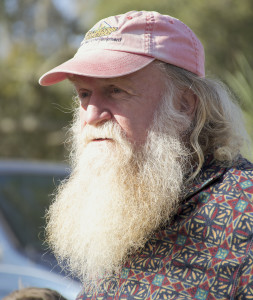
Mushroom expert Ken Crouse of Peaceful Valley Farms, North Carolina. Photo by Green Deane
My personal challenge is learning mushrooms. As I tell my classes I knew a mushroom expert many years ago but I knew him long before I knew he was also a mushroom expert. And while he indeed knew his mushrooms (dying of natural causes) he was so irresponsible in the rest of his life that I could never quite believe him when he said a mushroomswas edible. I knew too much about the man. The non-mushroom part of his life engendered a severe credibility issue. So I came to study mushrooms later in life. This is why I attend classes by Mycol Stevens in Gainesville and Benjamin Dion in Ft. Myers. At Earthskill gatherings I get to hang out with fungiphiles such as Ken Crouse and Todd Elliott. Ken, like Doug and Todd, lives North Carolina not far from where I spend August trying to conquer the Appalachian Trail and stuff local plant knowledge into my head.
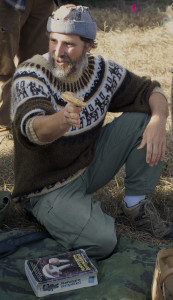
Gainesville Mushroomer Mycol Stevens. Photo by Green Deane
Earthskill conferences are also a time for feedback. Two things you can’t control in life are the unexpected and unintended consequences. No matter how much one can plan the unexpected can and will happen. Indeed, knowing the unexpected will happen and coping with the it is perhaps one of the hallmarks of becoming a fully functional competent adult. Unintended consequences can range from bad to good. Governmental bodies are well-known for unintentional conswquenes such as requiring all business to have a tax stamp and license thus outlawing and fining children’s lemonade stands. Unintended consequences, however, can also be good.
When I started EatTheWeeds seven years ago my goal was to help some friends. It has unintentionally gone beyond that. Because of this website and You Tube videos I’ve had many million visits and views. At the gathering I had a fellow tell me I have saved him a lot of work. He explained a lot of weeds he used to labor out of his garden now get eaten. That’s a win win. Another said he started his specialty farm because of the knowledge he learned on this site. That is gratifying. Another surprised me by saying I was the reason why he became an ecologist. Sometimes putting good out into the universe does make a difference (which is also what President John Adams instructed his children: “Be good. Do good.”)
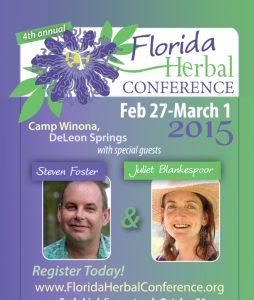
Florida Herbal Conference 2015
The next life experience in the schedule is the Florida Herbal Conference, Feb 27 to March 1st, organized by herbalist Emily Ruff. I’ve taught edible plants there for the last three years and will be there again this year. In fact I plan to spend a lot of time there. It’s a must for all southern herbalists and well as those northern ones who want to escape freezing cold and study their craft in the dead of winter. It always has interesting speakers and great classes. While there is some cross over between Earthskills and Herbalism the conferences are sufficiently different to justify attending both. For more information and to register go here.
Foraging Classes: Sunday, February 22nd, Mead Garden: 1500 S. Denning Dr., Winter Park, FL 32789. 9 a.m. Meet to the right (east) of the Bartram sign. For more information or to sign up for a class go here.

Green Deane Forum
In nearly every class and daily on line I am asked if I can identify a plant if a picture is sent to me. I say I will try and also suggest the sender join the Green Deane Forum. There’s a UFO page there, Unidentified Flowering Objects. On the forum we chat about foraging — and other topics — every day along with techniques to harvest and use the bounty you have found. And it’s not just about Florida or the southeast. There are members from all around North America and the world. The link to join is on this page just to the right of this article. You do have to pick a screen name and the forum let members private message each other. There are only three rules: Keep it civil, keep it clean, and try to avoid mentioning Wikipedia (which Green Deane has a significant dislike for.) Recent topics include Witches Butter, Braiding Natural Cordage, Smilax-Asparagus alternative, Loquats Pie and Grappa, Wild Possum Grape Jelly, Young People Want Healthier Food, Leather Root? Horsemint, Blueberries in January? UFO Weed, Darryl Patton Herbalist, Duckweed, Shaggy Mushy, Mystery Tree, and Gnarly Mushroom.
 I’m sure no one has been counting but this is Eat The Weeds 150th newsletter. The first newsletter was nearly five years ago in June 2010. They were monthly then and mailed individually (thus the number of subscribers were intentionally kept small and restricted to only those who actually read the publication regularly.) The newsletters went to weekly in late 2011 but were still more difficult to mail than write. Some two years ago a mailing service was hired. Now the mailing is handled by them and costs $100 a month for the time being. Vacations, skipping fifth Tuesdays, occasional illness, and on-the-road teaching reduced the number of editions slightly. They are all archived, however, under “newsletters” and arranged by date with a brief description of each. The newsletter is published on Tuesday afternoons because research showed that was the time it was mostly likely to be read once sent. And indeed it is read about four times as much as other newsletters in its class.
I’m sure no one has been counting but this is Eat The Weeds 150th newsletter. The first newsletter was nearly five years ago in June 2010. They were monthly then and mailed individually (thus the number of subscribers were intentionally kept small and restricted to only those who actually read the publication regularly.) The newsletters went to weekly in late 2011 but were still more difficult to mail than write. Some two years ago a mailing service was hired. Now the mailing is handled by them and costs $100 a month for the time being. Vacations, skipping fifth Tuesdays, occasional illness, and on-the-road teaching reduced the number of editions slightly. They are all archived, however, under “newsletters” and arranged by date with a brief description of each. The newsletter is published on Tuesday afternoons because research showed that was the time it was mostly likely to be read once sent. And indeed it is read about four times as much as other newsletters in its class.
 There was no doubt in 2010 that an Eat The Weeds newsletter should be written but clearly once a month was not often enough. I changed to the weekly newsletter with great hesitation. Some 30 years ago I had to write a weekly column for a daily newspaper. It was an interruptive burden. The biggest problem then was finding something to write about. Fortunately that is not an issue with wild edibles, even in the winter. Republished below, this time with pictures and a little updating, is the inaugural newsletter from five years ago.
There was no doubt in 2010 that an Eat The Weeds newsletter should be written but clearly once a month was not often enough. I changed to the weekly newsletter with great hesitation. Some 30 years ago I had to write a weekly column for a daily newspaper. It was an interruptive burden. The biggest problem then was finding something to write about. Fortunately that is not an issue with wild edibles, even in the winter. Republished below, this time with pictures and a little updating, is the inaugural newsletter from five years ago.
Often I am asked “why forage for wild food?” That question is asked is probably worthy of an article unto itself. But here let’s focus on one answer out of several, cost.
The U.S. Bureau of Labor Statistics released recently their March (2010) number crunching. Food prices in March rose 2.4%, the sixth month in a row food prices have gone up, and the largest jump since 1984. But that’s counting everything. If you look at specific categories the numbers are more revealing.
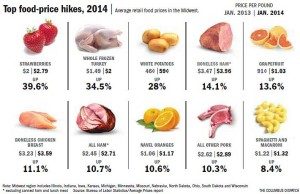
In 2014 food prices averaged up 3.7% while many items rose much more.
Fresh and dry vegetables went up up 56.1%, fresh fruits and melons 28.8%, fresh eggs 33.6%, pork 19.1%, beef and veal up 10.7% and dairy products up 9.7%. All of that makes the Bidens pilosa growing in my yard all the more attractive, maybe even that pesky squirrel. Some think “food inflation” will continue even if the economy improves. Apparently that is what is happening in India now. Some investment gurus are talking about investing in, literally, food, and others like Warren Buffet are recommending investment in agriculture or countries with a lot of agriculture.
It’s interesting the price of plant products rose more than animal products, though animal products are also dependent on plants, however not necessarily plants that man grows. The difference is commercial plants for people need chemicals and tending whereas many plants for animals — range grass for example — do not nor do most of the weeds we eat. However, contrary to what most folks think foraging is not free. There are costs. Discounting time, one has to get to a place to forage. One has to transport the collected food and the food has to be cleaned. That requires some cost, from calories to bike tires to gasoline to clean water.

Books in our non-village world are still an essential part of learning how to forage.
One also needs to know which plants to pick. That knowledge can come free, and/or from lessons, books, and internet services. My personal plant library of some six dozen books cost me about $1,000. You may never own more than one foraging book but my point is wild food is not totally free. But, it is the next thing to free, and the cost a lot less than store-bought food and is less subject to inflation and taxes. Once you have foraging knowledge inside your head any cost gets pro-rated over time to the point of being negligible. A $20 course and a $30 book totals up to $50 but if you and yours can eat for a lifetime it’s a good investment. It’s also a certain measure of independence and security.
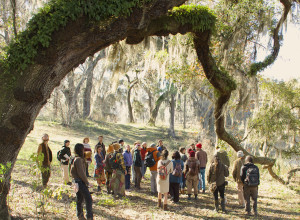
Earthskills students learning to forage. Photo by Green Deane
I’m not suggesting foraging an answer to the growing food problem. With unemployment hovering near 17% (depending who’s counting and how they count) there are nearly 40 million Americans on food stamps, up 22.4% over this time last year. The government is now paying out more in benefits than it is taking in. At some point entitlement programs will be cut back. However, 40 million people can’t go out and forage even if they knew how. The impact on the environment would be devastating. The realty is not even one percent of them (400,000) are interested in foraging. I doubt that even one tenth of one percent (40,000) are interested. Maybe one hundredth of one percent might be interested, 4,000, which is close to my number of subscribers. See how uncommon you are?
This we know: Food prices are rising, sharply. There is some cost associated with learning how to forage, and most people are not interested in foraging — at least not now. I think that adds up to a strong argument that not only is it economical to forage but that it will be a steady food supply because others don’t see the value it represents, and even if they did they are far behind you in the learning curve. Learning to forage can mean you have something to eat when they don’t. You certainly have more variety and better nutrition.
When you learn to forage you are doing more than identifying edible wild plants. You are also developing a skill and confidence. No matter how dire the need, those cannot be learned overnight. Foraging is like rigging, you learn mostly by doing and that cannot be rushed. You’re already way ahead of millions.
A NEW VEGETABLE
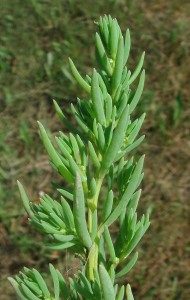
Seablite, Suaeda linearis
If you could choose one wild plant to become a commercial product, what would it be? Many people have tried to make Poke Weed (Phytolacca americana) a green in your local grocery but toxicity and the required two-boilings has always plagued its commercialization. The Ground Nut (Apios americana) was one of the original exports from colonial America but it has at least a two-year growth cycle. Louisiana State University (1984-96) developed a commercial variety but the program disappeared when the professor-in-charge, Bill Blackmon, changed colleges. In 1962 Professor Julia Morton of the University of Miami recommended Spanish Needles (Bidens pilosa) become a commercial product. Nearly a half a century later that hasn’t happened, perhaps because of flavor or the fact it can grow almost anywhere as a weed. My candidate would be Suaeda linearis, Sea Blite, and if I could figure out how to do it I would.
Sea Blite has everything going for it except perhaps for its name. It’s mild but tasty, has excellent texture, can be eaten raw or cooked though cooked is the usual way. It’s nutritious, stores well, looks good, easily grows in salty ground (read unused land) and even feels good to handle. About the only downside, for me, is that I have to drive about 55 miles to get some. I need to introduce it to my garden.
Think of Sea Blite as a Chinopodium that likes to grow in salty places, either near the ocean or salt licks. It has a high sodium content but boiling reduces that significantly. If you live anywhere near the ocean or inland salty areas, now and the next few months is the time to go looking for seablight and seepweeds. To read more about Sea Blite click here.
HOW SAFE IS FORAGING?
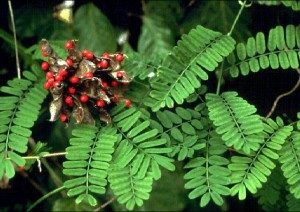
Rosary Peas are the most toxic seed on earth.
Excluding mushroom hunters, plant foragers have a good track record of staying alive. Plant foragers have about one accidental death every 20 years, and usually that’s from eating some member of the poison hemlock crowd. That should be a word to the wise. Locally, the nemesis is the Water Hemlock and it grows exactly where Watercress grows. When I collect Watercress I look at every piece before I collect or cook it, every single piece. Actually, there are several deadly local plants: Water Hemlock, the Yew, Oleander, Castor Beans, and the Rosary Pea, the most toxic seed on earth. I have been asked to do a video on toxic plants but I am afraid some idiot will not understand what the video is about and eat the wrong plant.
Most plant poisonings involve toddlers eating from the landscaping around their home, with the next highest incidence is toddlers eating the landscaping from their neighbor’s yard. Why we fill our home space with toxic plants rather than edible landscaping is beyond me.
Excluding suicides, adult poisonings are extremely rare. So, don’t be afraid of foraging. Just be careful. Study. Take lessons. Go with a friend and ITEMize!
CAN A FORAGER FIND TRUE LOVE?

There is a “Green” Dating service where you can meet a similar carbon footprint as yours.
According to the Timberland Company they can. The New Hampshire-based outfitting company has released the results of their 2010 eco-love survey. Oddly, it was male-centric. Apparently men are looking for love in all the green places. (Don’t shoot this messenger.)
Must Love the Earth. Fifty-four percent of men would question whether to start a relationship with a woman someone who litters. Others would ponder if a woman was worth dating if she doesn’t recycle (25%), leaves the lights on when not at home (23%) or drives a gas-guzzler (21%).
Guys Dig Green. One-quarter of men think “green” women make better life partners (24%) or friends (27%) than those who aren’t so environmentally responsible.
Plan an Eco-date. 41% of men would be more interested in an “adventure” date like hiking or rock climbing or a charity or service-focused date like tree planting, rather than the traditional “dinner and a movie” date.
Green eco-lebrities. Men say Cameron Diaz (27%) and Kate Hudson (26%) would inspire them to go green. Feelings are mixed on eco-celeb Jessica Biel. Twenty-one percent of men say she’s an inspiring green celeb, but only 13 percent of women agree.
Going Green. Almost a third of Americans (30%) feel they need to make more of an effort to purchase eco-friendly clothing over the next year. And, before you set out on your eco-date, consider eating locally grown food. More than half (53%) of Americans think that eating locally grown foods should be a priority in the next year. Almost three-quarters (72%) think Americans need to switch to energy-efficient light bulbs, 57 percent think Americans need to green their daily commutes by carpooling, walking or biking to work and 47 percent want others to take showers instead of baths to save water (showering with someone even saves more water.)
SALT SELLER
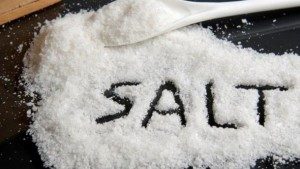
Five years later and Pepsi is still exploring the issue.
There’s less salt in your future but not less salt flavor, so it is claimed. PepsiCO did some research and found that only 20% of the salt on their products contributed to taste whereas 80% got swallowed undissolved, read untasted. So the company successfully set out to reshape salt crystals to melted faster on the tongue thus giving the same salty flavor but using 25% less salt. That would clearly cut costs for them in the future but the question is how will that be positioned on the label? 25% LESS SALT! LESS SALT MORE FLAVOR! Heck they might make an extra salty tasting product but claim it has normal salt levels. Quite a few possibilities. The new salt needs no approval, says PepsiCo, because it is just reshaped salt.
SPROUTS
The Weeping Holly (Ilex vomitoria “pendula”) has more caffeine in its leaves than any plant in North America.
